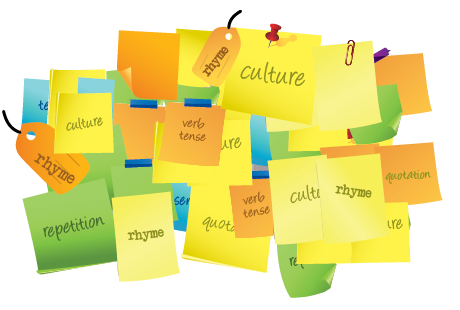Chantelle Warner, University of Arizona
Reading (Digital) Narrative: The Modes of Immersivity and Interactivity
I used eComma in a graduate level seminar titled Literacy through Literature. The course explores the role that literary texts and aesthetic reading play in the development of second language literacies. Literacy is used here both in the traditional sense of the reading of printed texts and in the wider sense of multiliteracies, which include social and cultural literacies as well as new media literacies.
One of the readings for the course was a chapter from narratologist Marie Laure Ryan’s book Narrative as Virtual Reality (2001) on immersivity and interactivity as two modes of reading narrative texts. At the end of this chapter, Ryan introduces an example from the book If on a Winter’s Night a Traveler by Italo Calvino. I decided to use eComma to allow students to consider Ryan’s distinction between immersive and interactive reading, and to examine what kinds of pedagogical interventions might encourage one or the other mode of engagement. I instructed my students to read Calvino’s text on eComma and to provide a minimum of 3 annotations.
Student and Teacher Comments
After the first few students had created annotations, I noticed that almost everything that had been posted was an experiential response. I added a couple of comments of my own, including one about Calvino’s use of the second person. I was curious to see if students would follow my lead or if they would continue to post about their personal reading experiences. A couple of people did respond to my comment, such as one student who commented:
For things that “talk to us” in the way that this text does, several things come to mind: 1) 2nd person narration is sometimes used in guided relaxation/meditation/calming exercises. People with a hard time relaxing might close their eyes and play a CD with something calming to focus their attention, like “You are sitting in a calm meadow. You see a deer on the edge of the trees and it runs across the meadow” etc. Using a 1st or 3rd person narrator instead would not have quite the same effect, I think. 2) Just off of the top of my head, tv shows can employ “talking to us” as a means of creating a more personal connection with the viewer, bringing him/her more into the action (such a in Sesame Street, when the characters sometimes ask the viewers questions and then pause for a response). It can also be used for comical effect, although I can’t think of a good example of this besides Arrested Development, which isn’t really quite the same (the narrator talks to us, but I don’t think the characters ever do). [Submitted by CMOSTERT@email…. on Sat, 11/17/2012 – 12:41.]
This comment, and comments like it, yielded productive material for our in-class discussion of the degree to which a text encourages either immersive or interactive readings. While CMOSTERT attempted to build upon what I had said by identifying other familiar literacy practices in which the second person was used, the better portion of the annotations pertained to their personal reading experiences. Many of these related to the particular experience of working with eComma.
Getting Used to New Technology
I had found eComma easy to use, so I decided not to give an introduction to the software. For this reason, a couple of students had trouble discovering how to add annotations, but this in itself provided some fruitful fodder for conversation. For example, jrk1 connected her frustrations with the unfamiliar technology with her responses to the narrator’s second person address:
I agree with the technology thing – I cannot figure out how to make a new comment so I am only replying to others. I also feel an annoyance with the being told what to do parts, but not because I feel like I, personally, am being told what to do, but because I think the author is trying to be funny, and I feel this has been done before? Or is at least a bit cliché. But in the final paragraph, when he says that I am no longer a person who expects much from anything anymore (I also cannot figure out how to tag…) that’s when I suddenly got drawn into the text. This is when I feel like I was being addressed, not because of the second person, but because he was describing a human emotion I could relate to. I started considering this a literary text when it stopped trying to sound like a funny intro to a Eng101 text on how to read and starting allowing me to interpret meaning. Perhaps this is my own definition of literature. [Submitted by jrk1@email.ariz… on Mon, 11/19/2012 – 12:48.]
This quote sparked a discussion in class about the potential effects of pedagogical applications that might encourage immersive and interactive readings.
Using eComma in the Future
At the end of our in-class discussion, I asked students whether they could envision working with eComma in their classes and what ideas they had for how to implement it. Even the students who had had problems using the software agreed that the software held a lot of potential for working with texts in an L2 context. They were most excited about the flexibility of the software. Several noted that in addition to the kind of general response assignment that they had been given, the program could also be used as a space to share students’ findings during a text-anchored Internet research activity.





